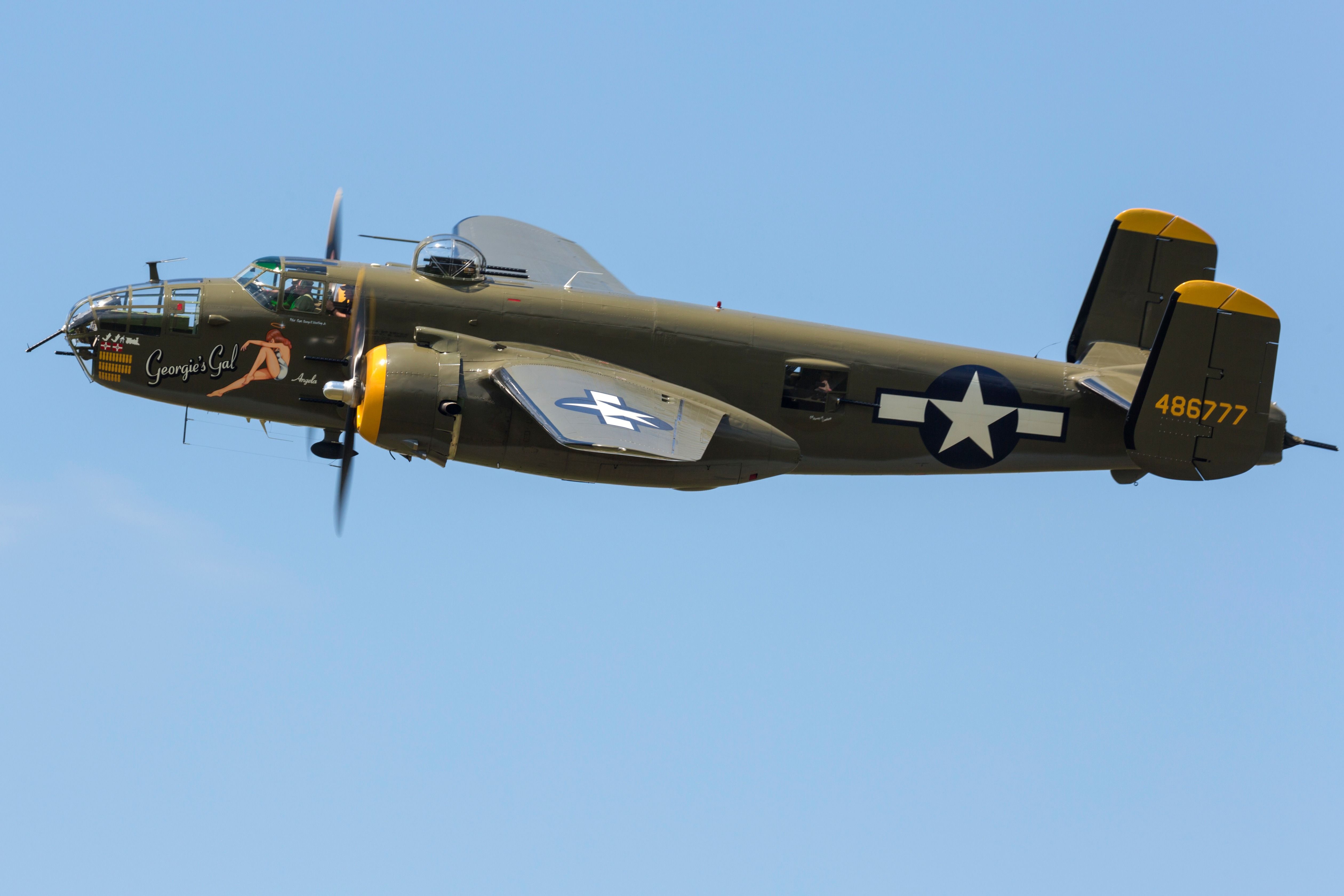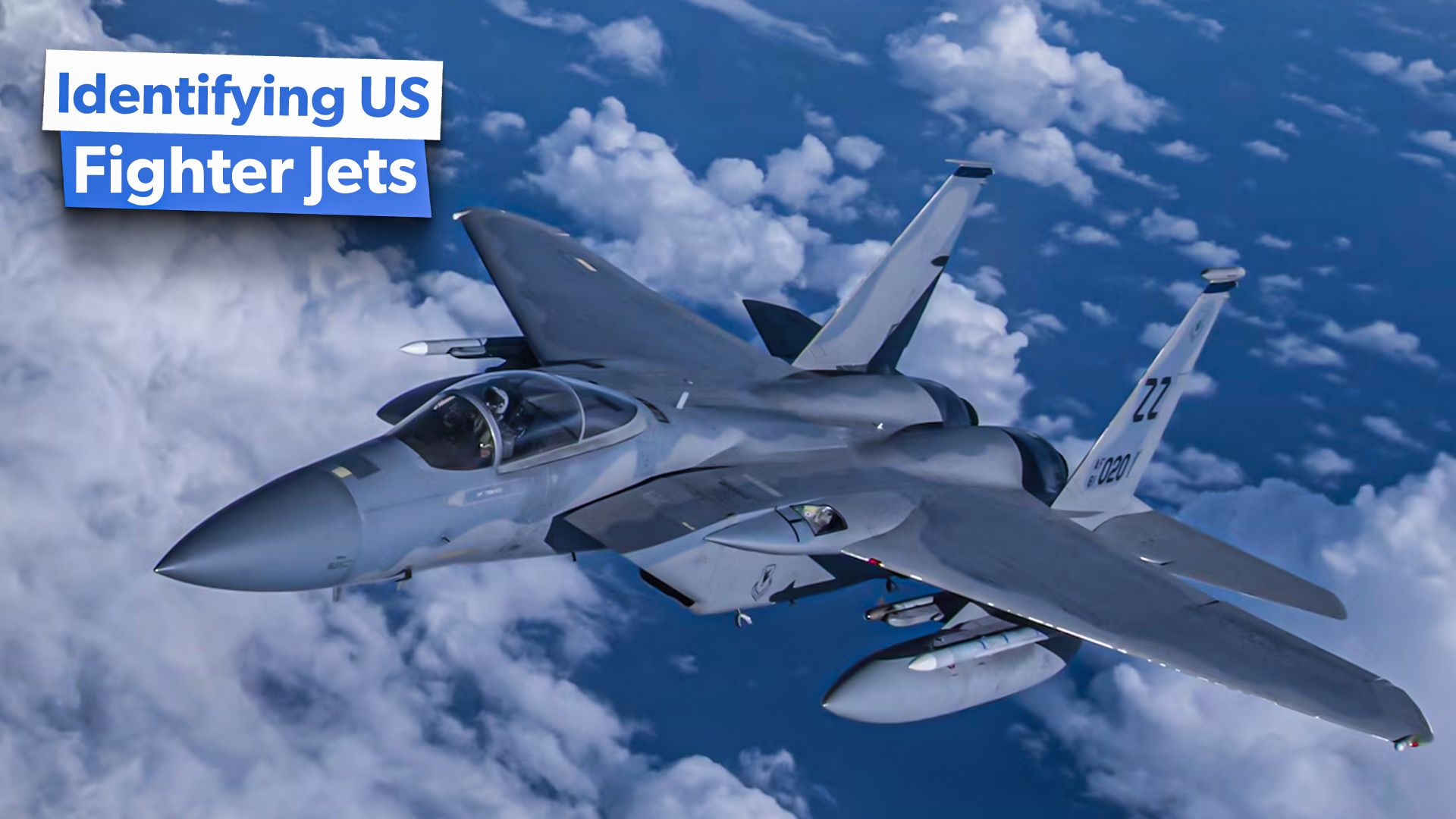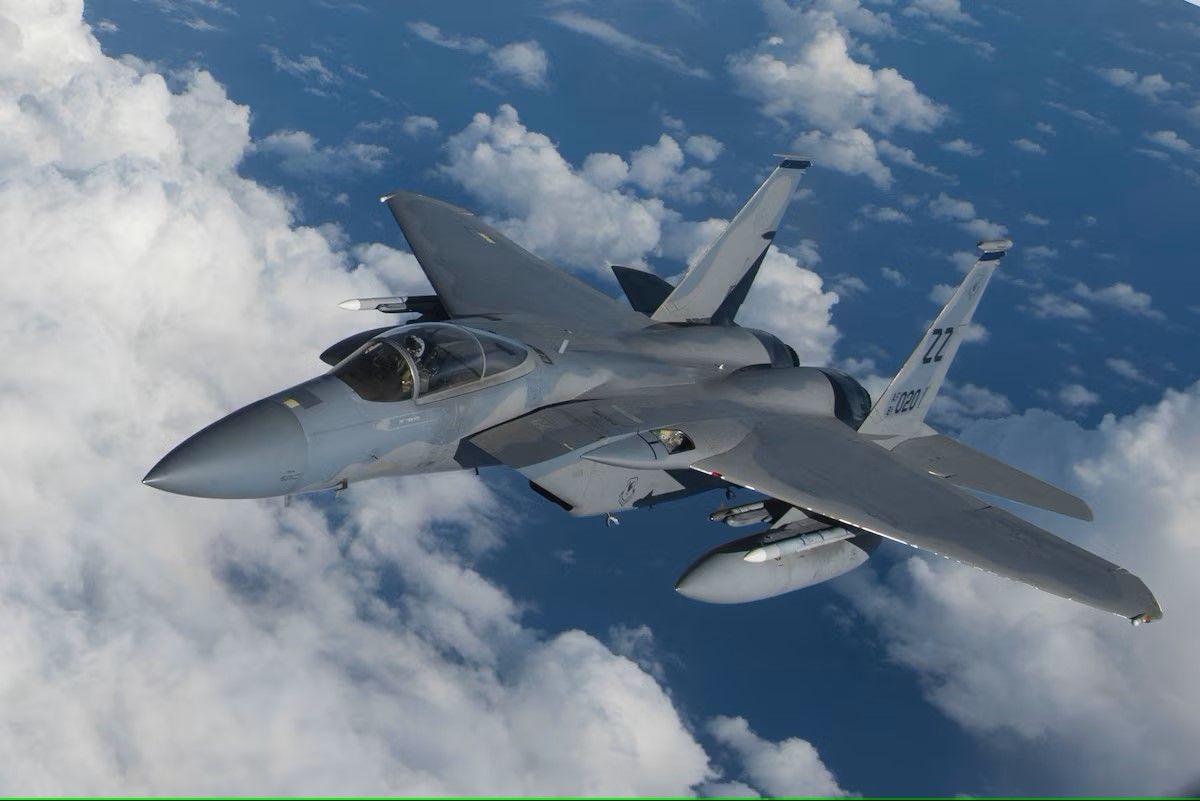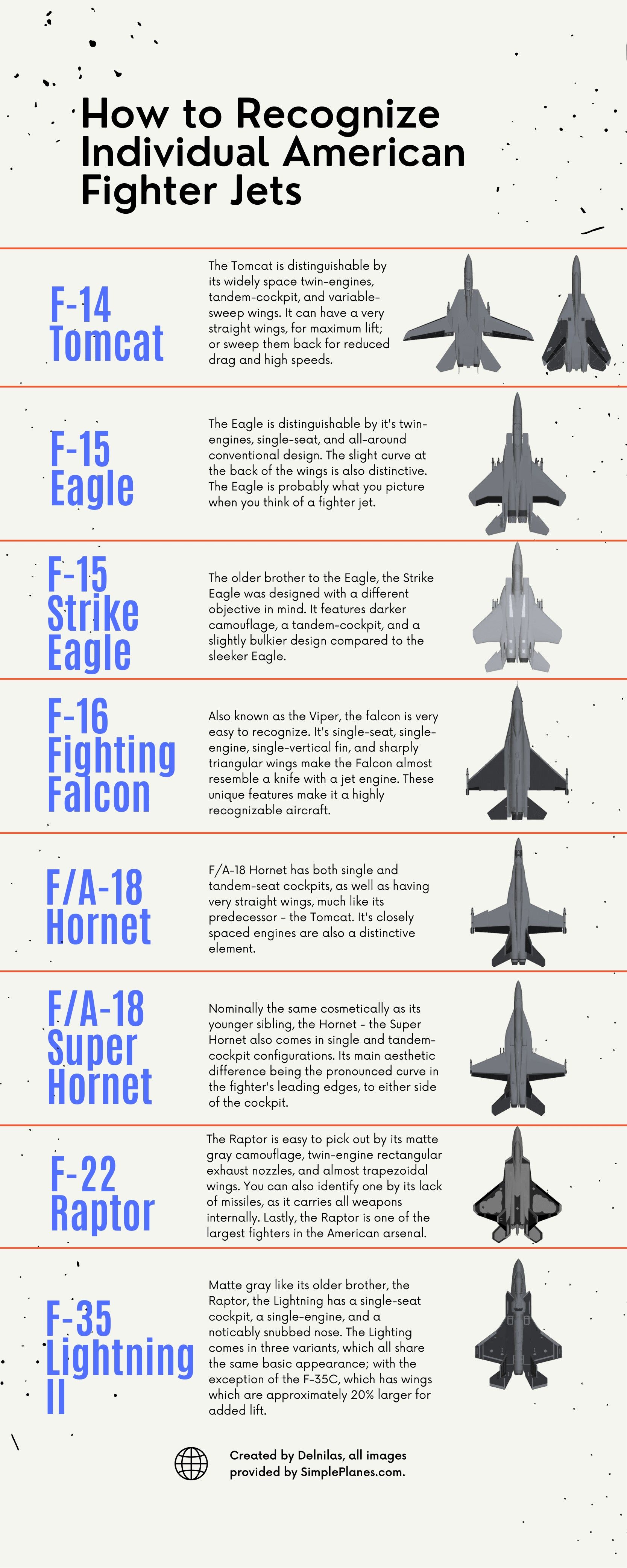Summary
- US fighter planes in WWII had unique appearances, making them easy to identify.
- Modern fighter jets are more difficult to tell apart, but distinct features still exist.
- 4th and 5th Generation fighters have specific characteristics for identification.
Besides their KATN (Kick A$$ and Take Names) performances in combat, one of the cool things about US fighter planes in the Second World War was their distinctive individual appearances. ‘Twas easy enough to tell a North American P-51 Mustang from a Republic P-47 Thunderbolt from a Lockheed P-38 Lightning from a Curtiss P-40 Warhawk from a Vought F4U Corsair from a Brewster Buffalo. (It could be slightly trickier telling a Grumman F4F Wildcat from a Grumman F6F Hellcat, or a Bell P-39 Airacobra from a Bell P-63 Kingcobra, but eh, what the heck).

Related
Which World War II Military Aircraft Have You Seen?
Today marks 80 years since the end of World War II. Aerial combat was a significant feature of war, changing the face of global conflict for years to come. While it’s been eight decades since the fighting ended, WWII aircraft have been preserved at museums and airfields around the world. Which planes have you spotted from this period? Let us know below!
In this day and age, though US fighter jets haven’t become totally generic cookie-cutter lookalikes, they’re a bit harder to tell apart for the untrained eye. Simple Flying now attempts to decipher how to tell these newer warbirds apart.
Identifying the 4th Generation fighters
Might as well start with the older but still currently serving generation of warbirds and work our way forward from there, eh?
Three years ago, a Reddit poster with the username “r/Infographics” was nice enough to post a very handy-dandy infographic (with all images provided by SimplePlanes.com) titled “How to Recognize Individual American Fighter Jets,” which I’m shamelessly utilizing as my primary source of information for this article (“Work smarter, not harder,” eh).
From a personal standpoint, one of the trickier ID games is distinguishing the standard F/A-18 Hornet from the Super Hornet. Well, the Reddit guide tackles that conundrum quite adroitly, thank you very much:
- “F/A-18 Hornet has both single and tandem-seat cockpits, as well as having very straight wings, much like its predeceesor — the Tomcat. It’s [sic] closely spaced engines are also a distinctive element.”
- Nominally the same cosmetically as its younger sibling, the Hornet — the Super Hornet also comes in single and tandem-cockpit configurations. Its main aesthetic difference being the pronounced curve in the fighter’s leading edges, to either side of the cockpit.”
The next trickiest one is arguably the single-seat F-15 Eagle vs. the twin-seat F-15E Strike Eagle. Granted, the latter has the longer cockpit to help facilitate identification, but our Reddit poster nonetheless provides some useful additional pointers. However, I have to nitpick one egregious error on the infographic designer’s part, as he/she/they incorrectly describe the Strike Eagle as “The older brother to the Eagle”:
- “The Eagle is distinguishable by it’s [sic] twin-engines, single seat, and all-around conventional design. The silght curve at the back of the wings is also distinctive. The Eagle is probably what you picture when you think of a fighter jet.
- The older brother to the Eagle, the Strike Eagle was designed with a different objective in mind. It features darker camouflage, a tandem-cockpit, and a slightly bulkier design compared to the sleeker Eagle.”
The original single-seat Eagle made its maiden flight in July 1972, whilst the Strike Eagle did so in December 1986.
The twin-seat American twin-engined 4th Generation fighter most likely to get confused with the Strike Eagle is the F-14 Tomcat, as it too is a rather large warbird. So then:
“The Tomcat is distinguishable by its widely space [sic] twin engines, tandem cockpit, and variable-sweep wings. It can have a very staight wings [sic], for maximum lift; or sweep them back for reduced drag and high speeds.”
Well, heck, after all that, identifying the single-engine F-16 Fighting Falcon (AKA “Viper”) becomes much easier(!):
“Also known as the Viper, the falcon [sic] is very easy to recognize. It’s [sic] single-seat, single-engine, single-vertical fin, and sharply triangular wings make the Falcon almost resemble a knife with a jet engine. These unique features make it a highly recognizable aircraft.”
Identifying the 5th Generation fighters
At least here, we have a shorter list to work with, and conveniently, they’re both Lockheed Martin “Skunk Works” division products: the F-22 Raptor and the F-35 Lightning II.
In order to not put all my proverbial research eggs in one basket, I shall cite a different source this time, that being Hush-Kit’s so-called “Idiot’s Guide” to identifying modern jet fighters, published back in October 2019. (Rest assured, dear readers, we here at Simple Flying are *not* calling you idiots!).
“These all have twin vertical tails (those big vertical fin things at the back on the top)…These guys have a big triangle at the front at a little triangle at the back, which looks more traditional.”
Regarding the F-22, the anonymous author says this:
“The Raptor is big and loud and the cockpit canopy (the big glass window) reflects with a weird gold sheen (like that of the Rafale and F-35 it contains gold I think). The wings and tail are weirdly angular as if designed by a nerd with a ruler. Stealthy fighters look a bit like they haven’t been taken out of their packaging yet. The bum-holes look like zig-zaggy paddles or the vizor on a Gothic suit of armour. Zigzagged panel lines are there to help aircraft hide from radar, so are seen on stealthy designs like the F-22, F-35, J-20 and to a lesser extent, Rafale.”
Moving onto the F-35 from there:
“Is that an F-22? Nooooooooooo. Similar look, but whereas the Raptor looks like a perky athletic Alsatian guard dog with alert eyes and tail high, the F-35 looks like a fatter hound drooping from exhaustion. F-35 has one bum-hole and smaller less swept wings. The F-35 is also smaller. The Chinese J-31 looks like it but hasn’t entered service yet, so let’s ignore it for now…Reasonably common in the US, and in small communities around the world in rich countries. Sound cool by calling it by its US nickname of ‘Panther.’
Bonus section: Test your own knowledge
One of the suggested reading materials my Editors sent me to assist my research for this article was this quiz provided by the US Department of Defense (DOD), more specifically hosted by Defense Media Activity, titled “Just A Plane Quiz.” (See what they did there? Nyuk nyuk.)
There are a total of eight questions in it and granted, not all of the questions are about fighter jets, as they also cover bombers, transport planes (“trash haulers,” as fighter jocks derisively call them, which just goes to show that **intra-service** rivalries can be every bit as intense as interservice rivalries in the armed services), and helicopters.



